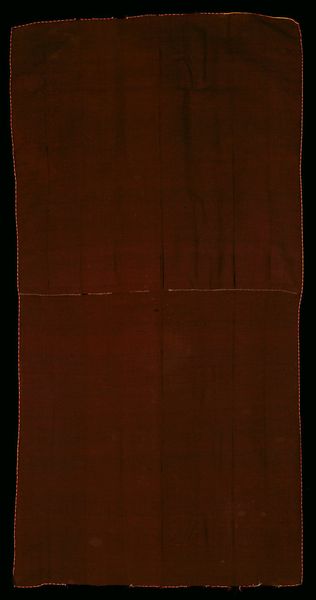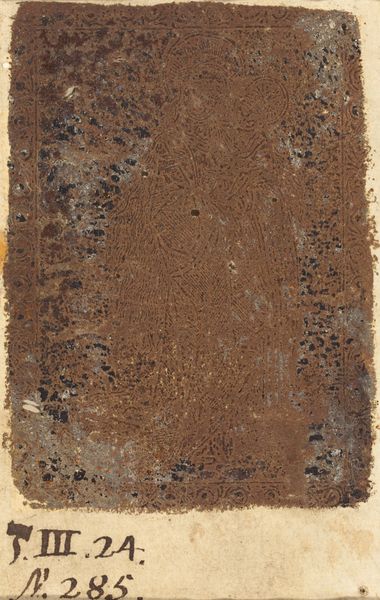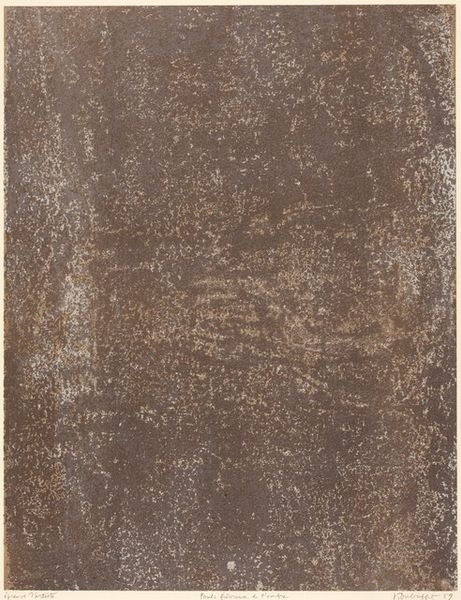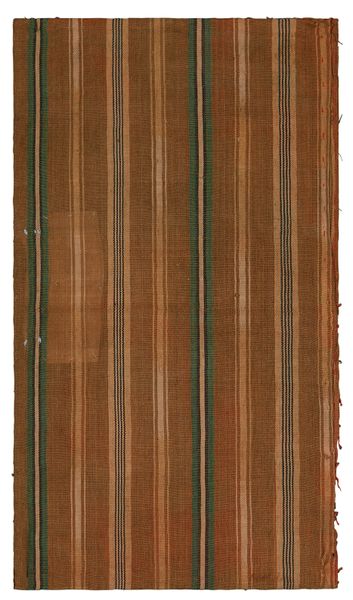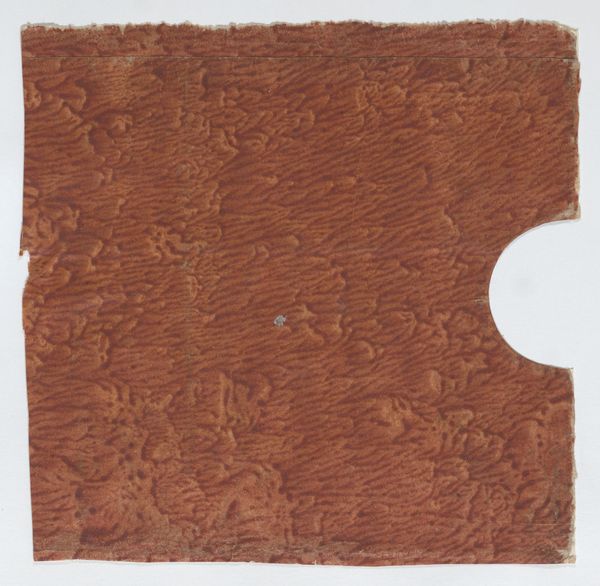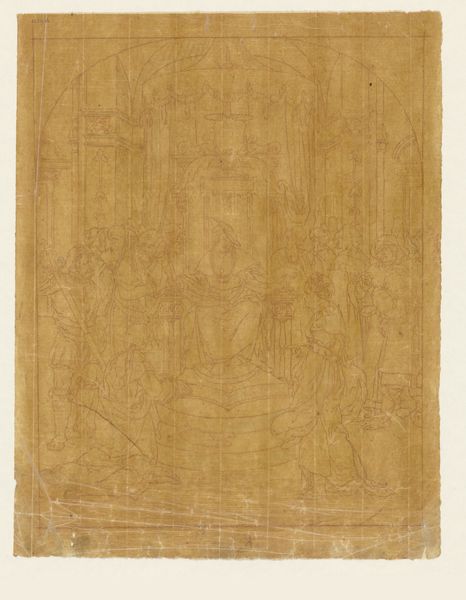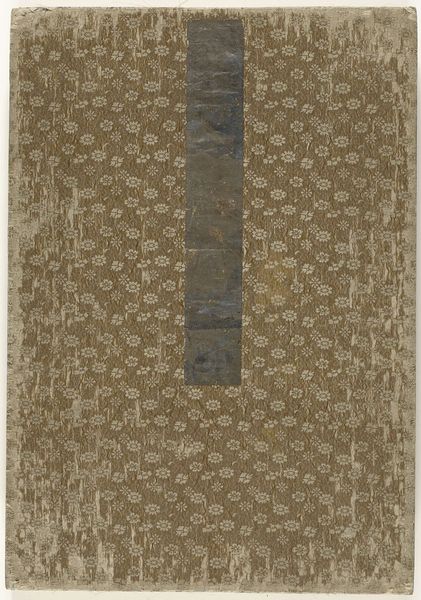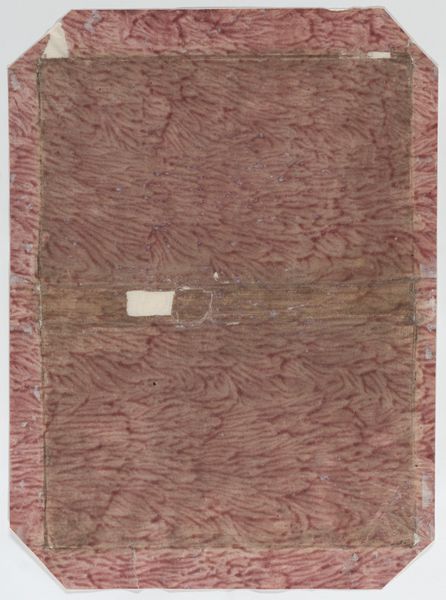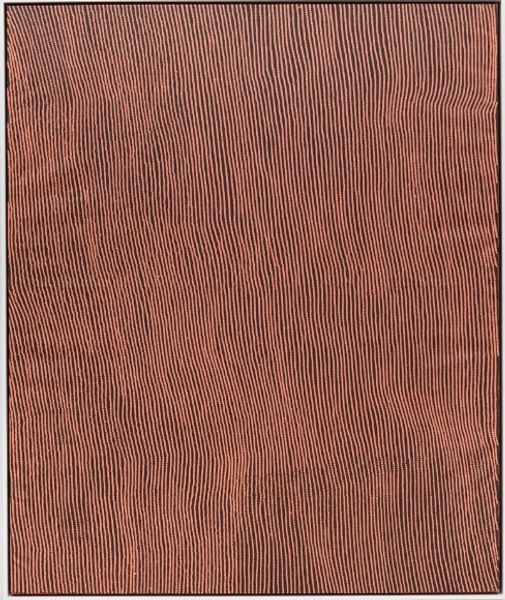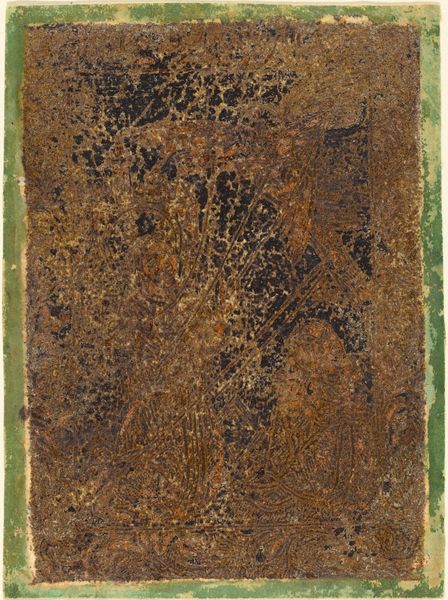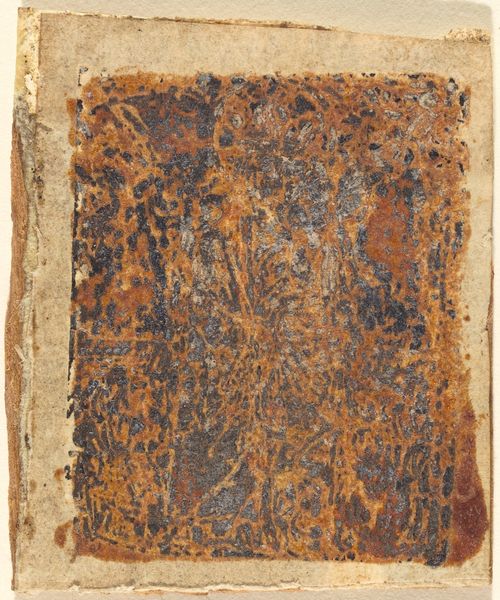
Dimensions: unconfirmed: 1062 x 804 mm frame: 1251 x 990 x 82 mm
Copyright: © DACS, 2014 | CC-BY-NC-ND 4.0 DEED, Photo: Tate
Curator: Hermann Nitsch’s “Blood Picture,” housed here at the Tate, immediately evokes a sense of visceral rawness. Editor: The composition, dominated by earthy reds and roughly stitched squares, certainly sets a somber, almost brutal tone. It has a powerful, primal presence. Curator: Nitsch, known for his provocative performances, extends that sensibility into this piece. Blood as a medium carries immense symbolic weight across cultures. Do you see echoes of sacrifice here? Editor: Perhaps, but the overlaid squares suggest a deconstruction, an attempt to contain or rationalize something inherently chaotic. It is as though it's an attempt to order the disorder of the blood on display. Curator: Yet, the very act of framing and displaying it transforms its meaning. It's no longer a private ritual, but a public contemplation. Editor: True. Ultimately, Nitsch seems less interested in shocking and more interested in the psychological resonance of his chosen material and form. Curator: An insight well considered! This work reveals its complexities the more deeply we look. Editor: A challenging, yet ultimately rewarding, encounter.
Comments
Join the conversation
Join millions of artists and users on Artera today and experience the ultimate creative platform.
tate 6 months ago
⋮
This is one of the first paintings that Nitsch made using blood in the early 1960s. ‘I took cloth, wetted it with blood as well as pouring blood over it, then I fixed it on canvas’, the artist explained. The use of blood recurs consistently in Nitsch’s work, suggesting both sacrifice and redemption. His performance art is highly ritualistic and includes animal sacrifice, the splashing of warm blood and crucifixion. Nitsch believes art to be a self-purifying ceremony not only for himself, but also for the viewer. Gallery label, July 2008

